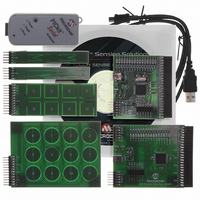DM183026 Microchip Technology, DM183026 Datasheet - Page 15

DM183026
Manufacturer Part Number
DM183026
Description
KIT EVALUATION PIC16F/PIC24F
Manufacturer
Microchip Technology
Series
mTouch™r
Datasheet
1.DM183026.pdf
(44 pages)
Specifications of DM183026
Sensor Type
Touch, Capacitive
Embedded
Yes, Other
Utilized Ic / Part
PIC16F727, PIC24FJ128GB106
Processor To Be Evaluated
PIC16F, PIC24F
Interface Type
USB
Silicon Manufacturer
Microchip
Kit Application Type
Sensing - Touch / Proximity
Application Sub Type
Capacitive Touch
Kit Contents
6x Brds, Analyser, Cable, CD
Lead Free Status / RoHS Status
Lead free / RoHS Compliant
Voltage - Supply
-
Interface
-
Sensitivity
-
Sensing Range
-
Lead Free Status / Rohs Status
Lead free / RoHS Compliant
Available stocks
Company
Part Number
Manufacturer
Quantity
Price
Company:
Part Number:
DM183026
Manufacturer:
Microchip Technology
Quantity:
135
Company:
Part Number:
DM183026-2
Manufacturer:
Microchip Technology
Quantity:
135
Company:
Part Number:
DM183026-2
Manufacturer:
MICROCHIP
Quantity:
12 000
2.1
© 2009 Microchip Technology Inc.
INTRODUCTION TO THE TOUCH INTERFACE
Chapter 2. The Demonstration Application
This chapter describes the touch sense application that is preprogrammed on the
PIC24F and PIC16F microcontrollers, and its general principles of operation. Topics
included are:
• Introduction to the Touch Interface
• Individual Touch Sense Demonstrations
On the PIC16F727 Motherboard, the on-chip Cap Sense Module (CSM) creates a
relaxation oscillator to perform touch sensing. The period or frequency of the relaxation
oscillator can be measured, and when the sensor is touched, the frequency will drop
and the period will increase, indicating a touched condition.
Control of the touch sense features is built on the PIC24F microcontroller’s on-chip
Charge Time Measurement Unit (CTMU) module. The CTMU consists of a constant
current source that charges each touch circuit to a fixed voltage level. When any addi-
tional capacitance is added to the circuit (from the touch of a fingertip, for example), the
fixed current source will now charge the circuit to a lower voltage. This change is how
the microcontroller detects a touch event. A more detailed description of the CTMU’s
operation is provided in Section 11, “Charge Time Measurement Unit (CTMU)”
(DS39724) of the “PIC24F Family Reference Manual”.
The microcontrollers use the CTMU or CSM to monitor its analog input channels, which
are in turn connected to capacitive touch pad sensors on the top layer of the circuit
board.
The evaluation board has four different sensor demonstration boards:
1. Direct 8 Key Plug-in Board
2. Matrix Key Plug-in Board
3. 2-Channel Slider Plug-in Board
4. 4-Channel Slider Plug-in Board
A more detailed description of the CAP TOUCH – CTMU Evaluation Board’s operation
is provided in Chapter 4. “Evaluation Board Hardware”.
2.1.1
The response of the sensor to fingertip touch is influenced by many factors: touch
areas, voltage and current levels, ambient humidity, static buildup, and so on. Most of
these factors have been accounted for in designing the demo application firmware, and
are based on typical environmental values, and certain assumed constants. The demo
application is very flexible in the sense that it can be modified by the user.
The PC side application accompanying the mTouch Capacitive Evaluation Kit can be
used to change the sensitivity of the sensors by writing trip point information back
to the board. This is discussed in more detail in Section 3.2.2.1 “Global Diagnostic
Window Settings”.
Touch Sensitivity
mTouch™ CAPACITIVE EVALUATION
KIT USER’S GUIDE
DS41385A-page 11












